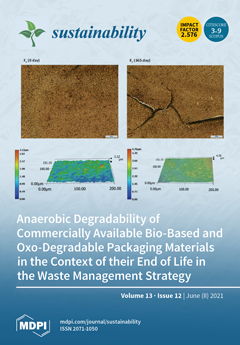The deficiency of nitrogen (N) in soil restricts agricultural productivity and its overdosage pollutes the atmosphere. Nitrogen is a vital component of protein, chlorophyll and various physiological processes. When it is applied at a recommended dose, it may be lost through fixation, leaching, volatilization and denitrification, etc. Therefore, there is a dire need to harmonize the supply of nitrogen according to crop and soil requirements. Under this situation, precision nitrogen management is one of the best options. GreenSeeker
TM is an integrated optical sensor with a variable application rate and mapping system that measures crops’ nitrogen requirements. To ascertain the abovementioned facts, a research study was conducted at the National Agriculture Research Center, Islamabad, Pakistan, to examine the response of fodder oat to nitrogen management (N0 = control, N1 = 80 kg ha
−1 basal dose, N2 = 40 + 40 kg ha
−1 split doses, N3 = 40 kg ha
−1 with one-time management with GreenSeeker
TM and N4 = 20 kg ha
−1 with two-time management with GreenSeeker
TM) and seed rate (S1 = 80, S2 = 100, S3 = 120 and S4 = 140 kg ha
−1). Data were recorded on the agronomic and physiological aspects of the crop and economic analysis was performed for GreenSeeker
TM-based N application against the conventional recommended dose of nitrogen application. Mean values showed that greater number of tillers plant
−1 (6), fresh weight (16572 kg) and photosynthetic rate (11.64 mmol m
−2 s
−1) were noted in the treatment N4 (20 kg ha
−1 and two-time management with GreenSeeker
TM). Greater plant height (70.8 cm) and leaf area (64.14 cm
2) were recorded in treatment N2 (40 + 40 kg ha
−1 split doses) as compared to the control. The effects of nitrogen on fodder oat were forecasted through NDVI. The results suggested that nitrogen treatment N4 (18 kg ha
−1) managed by GreenSeeker in the PARC Oat cultivar produced the maximum NDVI value (0.68) at the booting stage among all treatments. The correlation of NDVI at the tillering and booting stages with green fodder yield was positive (R
2 = 0.80). Therefore, the tillering and booting stages can be good depictive stages at early and later growth stages of fodder oat under the agro-climatic conditions of Islamabad, Pakistan. Based on the results, it is recommended to apply an initial dose of 20 kg ha
−1 nitrogen along with two-time management with GreenSeeker
TM for obtaining more green fodder yield in fodder oat. In Crux, with N1, a total of 80 kg ha
−1 nitrogen was applied to achieve an estimated net profitability of USD 582.13. With N4, a total 58 kg ha
−1 nitrogen was used to achieve a net profitability of USD 836.16; therefore, this treatment was found to be environmentally safe as compared to N1 (80 kg ha
−1).
Full article





